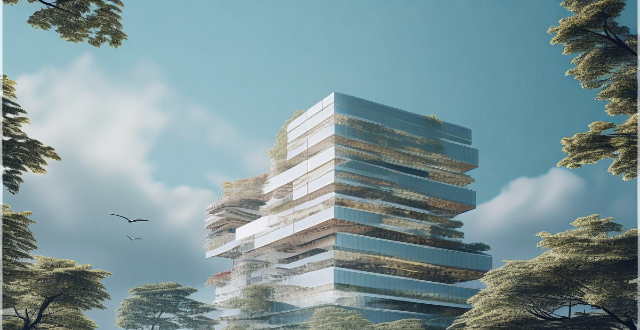The text discusses the challenges faced by architects and engineers in designing energy-efficient buildings. These include balancing aesthetics and efficiency, integrating renewable energy sources, meeting energy efficiency standards, cost considerations, climate change and weather variability, maintenance and durability, and limited public understanding. Despite these challenges, addressing them can lead to the creation of beautiful and sustainable buildings.

Challenges Faced by Architects and Engineers in Designing Energy-Efficient Buildings
Designing energy-efficient buildings is a complex task that requires a deep understanding of various factors. Architects and engineers face several challenges while designing such buildings. Here are some of the key challenges:
1. Balancing Aesthetics and Efficiency
Architects often struggle to balance the aesthetic appeal of a building with its energy efficiency. This is because some design elements that make a building visually appealing may not be energy-efficient. For example, large windows can let in natural light and offer stunning views, but they can also lead to heat loss or gain, making it harder to maintain a comfortable temperature inside the building.
2. Integrating Renewable Energy Sources
Incorporating renewable energy sources like solar panels or wind turbines into a building's design can be challenging. Engineers need to consider factors like the orientation of the building, the amount of available space for these systems, and the potential impact on the building's structure.
3. Meeting Energy Efficiency Standards
Many countries have strict energy efficiency standards that buildings must meet. These standards can be complex and difficult to achieve, especially for larger buildings or those with unique designs.
4. Cost Considerations
Energy-efficient technologies and materials often come at a higher cost than traditional options. This can make it difficult for architects and engineers to stay within budget while still achieving high levels of energy efficiency.
5. Climate Change and Weather Variability
As our climate continues to change, architects and engineers must consider how their designs will perform under different weather conditions. This includes considering extreme weather events like heatwaves or heavy snowfall, which can put additional strain on a building's heating and cooling systems.
6. Maintenance and Durability
Energy-efficient buildings often require less maintenance over time, but this can be offset by the initial cost of installing more advanced systems. Additionally, some energy-efficient technologies may have shorter lifespans than traditional options, requiring more frequent replacements.
7. Limited Public Understanding
Despite growing awareness about the importance of energy efficiency, many people still do not fully understand how it works or why it matters. This can make it difficult for architects and engineers to justify the additional costs associated with designing energy-efficient buildings.
In conclusion, designing energy-efficient buildings is a complex process that requires careful consideration of many factors. By addressing these challenges head-on, architects and engineers can create buildings that are both beautiful and sustainable.